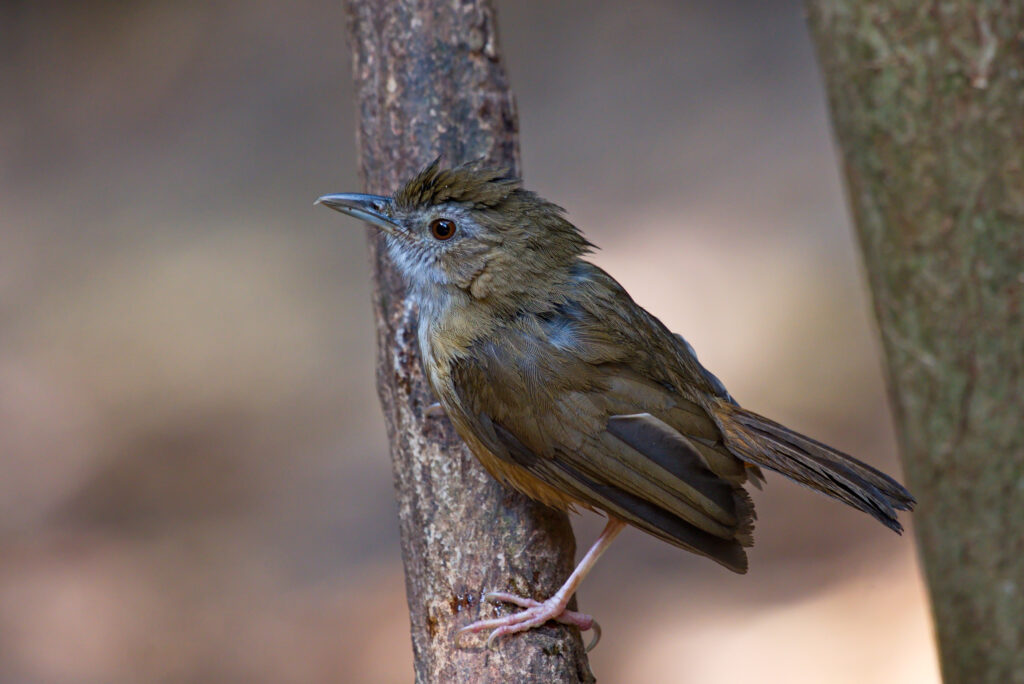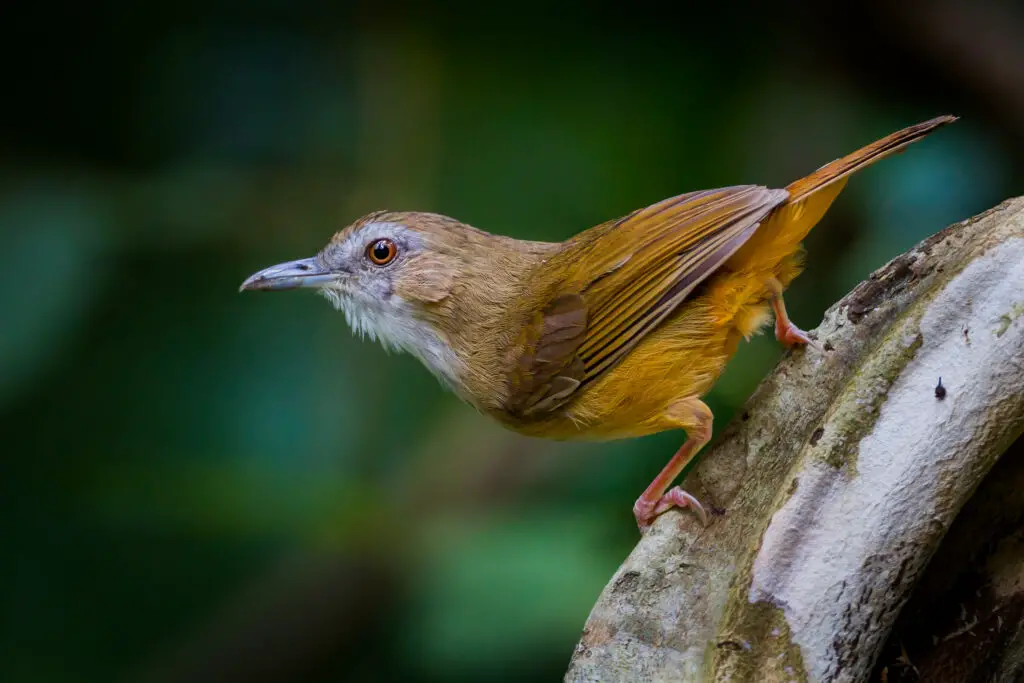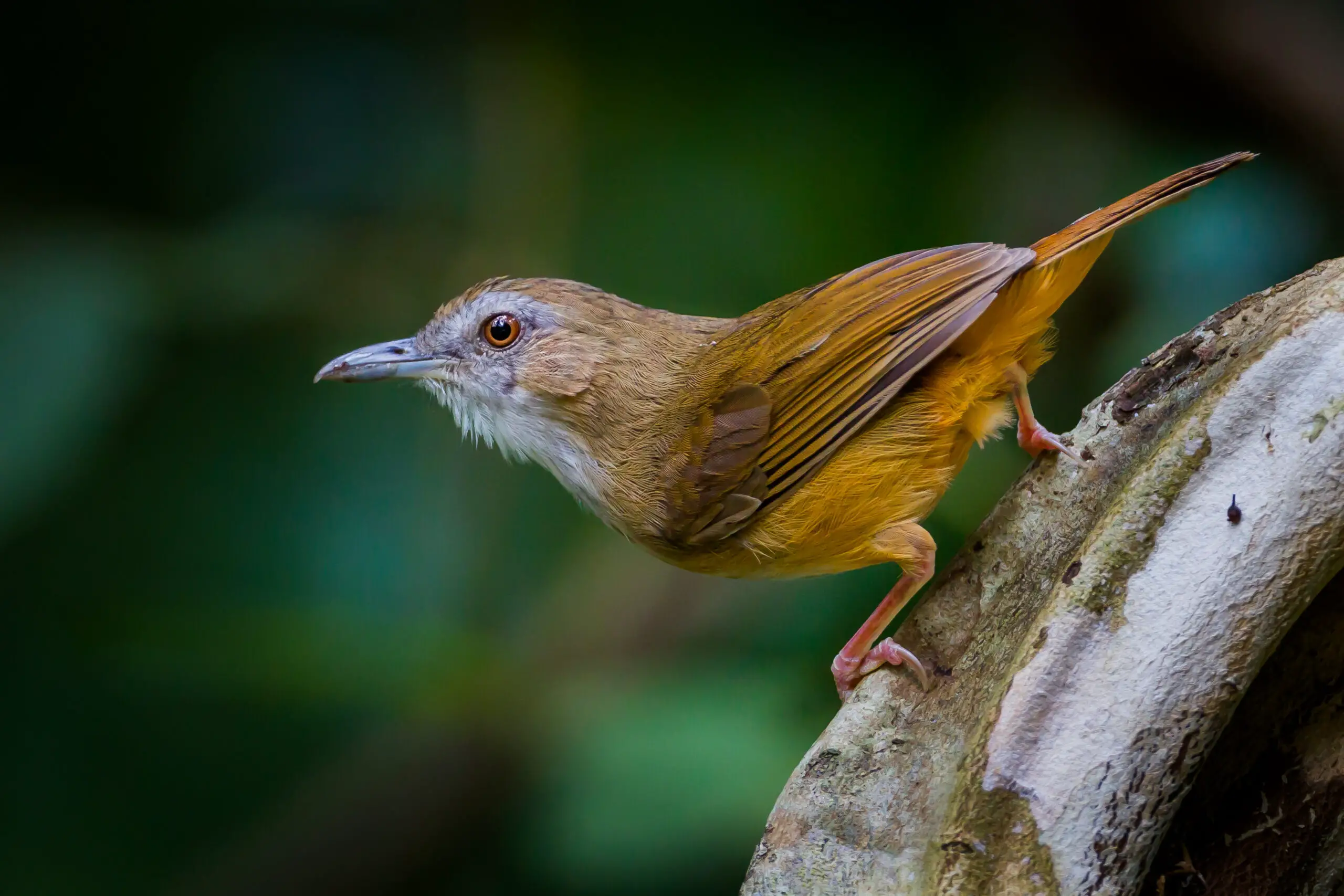Abbott’s babbler (Malacocincla abbotti) is a small, brown bird species that belongs to the family of Timaliidae. This elusive bird is endemic to Borneo and Sumatra islands in Indonesia and Malaysia.
Abbott’s babbler is primarily found in lowland forests with dense undergrowth vegetation, making it difficult for researchers to study its behavior and ecology. The scientific name of the Abbott’s babbler honors William Louis Abbott, an American naturalist who collected specimens from Southeast Asian region during 19th century.
Since then, little has been known about this secretive bird until recent studies shed light on its unique features such as their strong vocalizations which can be heard up to 200 meters away. Despite being one of the most common birds in its range, Abbott’s babbler remains understudied due to habitat loss caused by deforestation and human activities.
In this article, we will explore the characteristics, behavior, distribution, and conservation status of Abbott’s babbler based on available literature and research.

Characteristics Of Abbott’s Babbler
Abbott’s Babbler is a small bird species that belongs to the Leiothrichidae family. This bird species has an average length of 18 cm and weighs around 25 g, with a distinctive brownish-grey plumage on its upperparts and white or grey underparts.
Abbott’s Babbler inhabits dense undergrowth in lowland forests, secondary growth, and bamboo thickets across Southeast Asia including Myanmar, Thailand, Malaysia, Sumatra and Java islands. They are known for their unique vocalization pattern which includes various calls such as whistles, chirps, trills and other sounds that are used to communicate within groups.
The habitat preference of this bird species makes it challenging to spot them in their natural environment due to their secretive nature and shy behaviour. Therefore, researchers often rely on sound recordings to identify Abbott’s Babbler populations in different locations.
Behavior And Ecology
Abbott’s Babbler is a small bird species that inhabits the dense undergrowth of forests in Southeast Asia. While its physical characteristics have been well-documented, less is known about its feeding habits and social structure.
Studies suggest that Abbott’s Babbler feeds mainly on insects and other small invertebrates found among the forest floor debris. They are also opportunistic feeders who will eat fruits and seeds when available.
As for their social structure, these birds live in groups consisting of up to six individuals with one breeding pair dominating the group members.
The non-breeding members help with nest building, incubation, and chick rearing tasks. These cooperative behaviors may increase their chances of survival by improving mate guarding skills and reducing predation risk.
Understanding the feeding habits and social structure of Abbott’s Babbler contributes significantly to our knowledge of this elusive bird species and highlights the importance of preserving their natural habitats for future studies.
Distribution And Habitat
The Abbott’s Babbler is distributed across Southeast Asia, specifically in the countries of Thailand, Myanmar, Laos, Vietnam, and Cambodia.
Within these areas, they are commonly found in dense vegetation such as bamboo thickets or lowland evergreen forests.
They have also been noted to inhabit secondary growth forests that have been previously disturbed by human activity.
These birds prefer habitats with high humidity levels and a temperature range between 20-27°C.
The geographical range of this species extends from sea level up to an elevation of approximately 1,500 meters above sea level.
Although their habitat preferences may vary slightly depending on location, it is clear that the Abbott’s Babbler has adapted well to its diverse environments within its geographic range.
Conservation Status And Threats
The distribution and habitat of Abbott’s Babbler have been well documented, but the species has faced population decline in recent years.
Despite being classified as a species of Least Concern by the IUCN Red List due to its large range and stable population, certain subpopulations are experiencing significant declines.
The primary threats facing Abbott’s Babbler include habitat loss through deforestation and conversion of land for agriculture or urbanization.
Additionally, illegal trapping for the pet trade and collection for scientific purposes also pose a threat to this species’ survival.
In response to these threats, conservation efforts have focused on protecting remaining habitats through land acquisition and management, restoration projects, and education initiatives aimed at reducing demand for illegally traded individuals.
While progress has been made in some areas, continued monitoring and adaptive management strategies will be crucial to ensure long-term viability of this important bird species.

Conclusion
Abbott’s Babbler is a small bird species found in the Malay Peninsula and Sumatra. This brownish-grey bird has distinctive white streaks on its head and throat, with a long tail that helps it balance while foraging.
Abbott’s Babblers are known to be shy birds, preferring dense undergrowth where they can hide from predators. These babblers have unique behaviors such as hopping instead of flying short distances between bushes, which makes them difficult to spot when searching for food or mates.
They feed primarily on insects and small invertebrates found in leaf litter and low vegetation. Despite being common within their range, habitat loss due to deforestation threatens this species.
In conclusion, Abbott’s Babbler is an interesting bird species found in Southeast Asia that exhibits unique behaviors and ecological adaptations.
With continued human-induced habitat destruction, conservation measures should be taken to protect these birds’ habitats and ensure their survival for future generations to appreciate.

